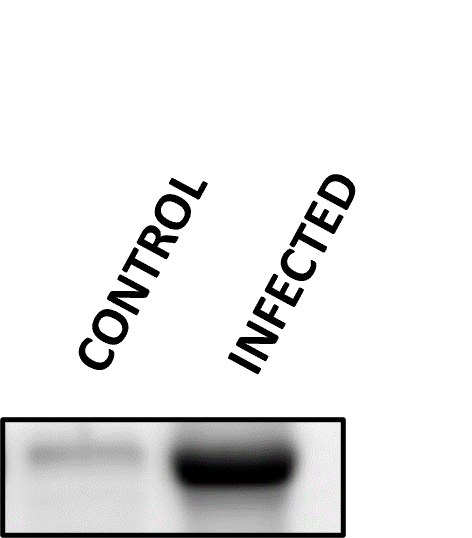Human t-Plasminogen Activator/tPA Antibody Summary
Ser36-Pro562
Accession # P00750
Applications
Please Note: Optimal dilutions should be determined by each laboratory for each application. General Protocols are available in the Technical Information section on our website.
Scientific Data
 View Larger
View Larger
Detection of Human t‑Plasminogen Activator/tPA by Western Blot. Western blot shows lysates of HEK001 human epidermal keratinocyte cell line and NTera-2 human testicular embryonic carcinoma cell line. PVDF membrane was probed with 2 µg/mL of Sheep Anti-Human t-Plasminogen Activator/ tPA Antigen Affinity-purified Polyclonal Antibody (Catalog # AF7449) followed by HRP-conjugated Anti-Sheep IgG Secondary Antibody (Catalog # HAF016). A specific band was detected for t-Plasminogen Activator/tPA at approximately 70 kDa (as indicated). This experiment was conducted under reducing conditions and using Immunoblot Buffer Group 1.
Reconstitution Calculator
Preparation and Storage
- 12 months from date of receipt, -20 to -70 °C as supplied.
- 1 month, 2 to 8 °C under sterile conditions after reconstitution.
- 6 months, -20 to -70 °C under sterile conditions after reconstitution.
Background: t-Plasminogen Activator/tPA
PLAT (Plasminogen activator; also tPA/Tissue Plasminogen Activator) is a 64-69 kDa extracellular glycoprotein that belongs to the peptidase S1 family of enzymes. It is secreted by diverse cell types such as fibroblasts, endothelial cells and astrocytes. Unlike many other serine proteases, PLAT/tPA circulates as an active proenzyme. Following clot formation, both tPA and its substrate, plasminogen, bind to clot fibrin. Here, tPA converts plasminogen to plasmin, an enzyme that subsequently degrades the fibrin matrix of the clot. Plasmin also cleaves local tPA, generating a disulfide-linked, two-chain tPA isoform whose activity is potentiated 5- to10-fold relative to the uncleaved form. tPa also cleaves PDGF-CC and activates MMP-9, suggesting an expanded role in vascular remodeling. Human PLAT/tPA is secreted as a 530 amino acid (aa) single chain polypeptide (aa 33-562). Depending upon its source, aa 33-35 or 33-38 may be removed in the circulation. PLAT contains one N-terminal fibronectin type I region (aa 39-81), an EGD-like domain (aa 82-120), a two kringle structures (127-208; 215-296) and a peptidase S1 domain (311-561). Plasmin cleaves PLAT/tPA between Arg310-Ile311, generating an active disulfide-linked heterodimeric molecule that contains chains of 35 kDa and 33 kDa, respectively. There are multiple isoform variants. One contains a three aa substitution for aa 1-40 coupled to a deletion of aa 79-208, a second shows a Gly substitution for aa 39-85, and a third possesses a 23 aa substitution for aa 269-562. Two additional isoforms shows a His substitution for aa 54-134, and a 25 aa substitution for aa 269-562, respectively. Over aa 36-562, human PLAT shares 81% aa sequence identity with mouse PLAT.
Product Datasheets
Citation for Human t-Plasminogen Activator/tPA Antibody
R&D Systems personnel manually curate a database that contains references using R&D Systems products. The data collected includes not only links to publications in PubMed, but also provides information about sample types, species, and experimental conditions.
1 Citation: Showing 1 - 1
-
Platelets, endothelial cells and leukocytes contribute to the exercise-triggered release of extracellular vesicles into the circulation
Authors: Alexandra Brahmer, Elmo Neuberger, Leona Esch-Heisser, Nils Haller, Malene Moeller Jorgensen, Rikke Baek et al.
Journal of Extracellular Vesicles
FAQs
No product specific FAQs exist for this product, however you may
View all Antibody FAQsReviews for Human t-Plasminogen Activator/tPA Antibody
Average Rating: 5 (Based on 1 Review)
Have you used Human t-Plasminogen Activator/tPA Antibody?
Submit a review and receive an Amazon gift card.
$25/€18/£15/$25CAN/¥75 Yuan/¥2500 Yen for a review with an image
$10/€7/£6/$10 CAD/¥70 Yuan/¥1110 Yen for a review without an image
Filter by:




